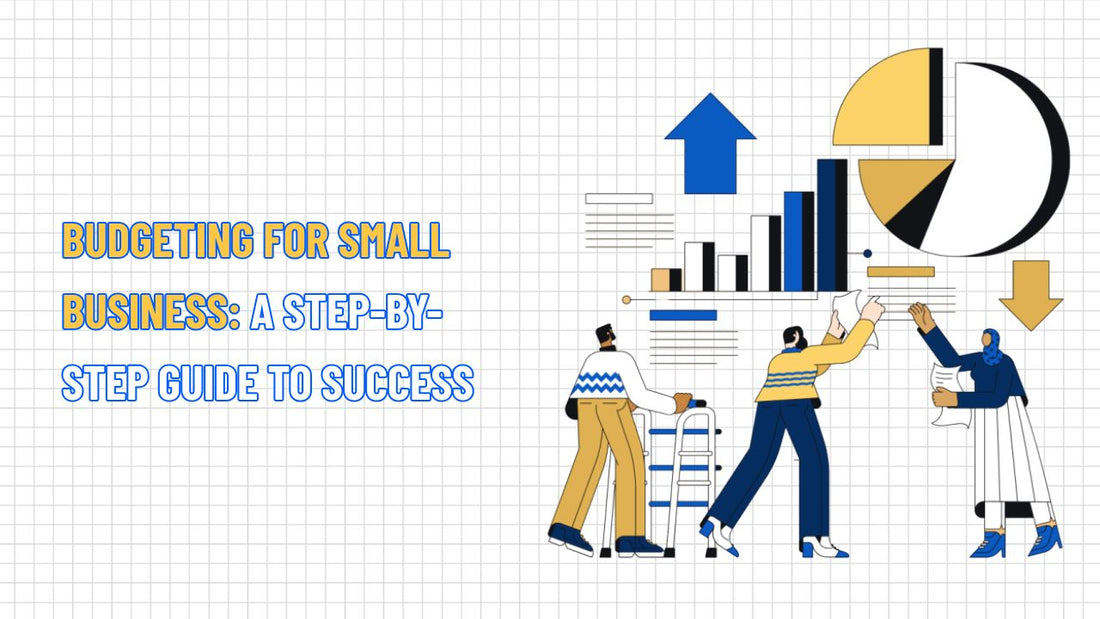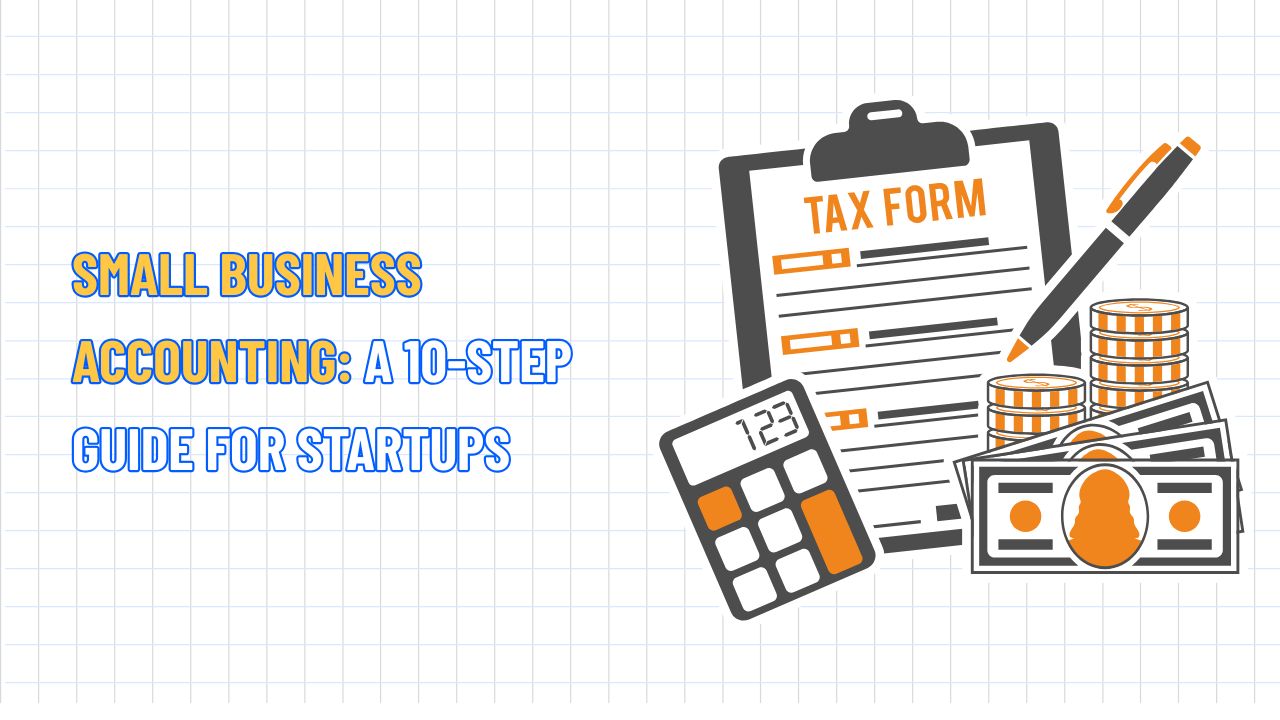Budgeting for Small Business: A Step-by-Step Guide to Success
Table of Contents Hide
Whether you're gearing up to launch an online store on Shopify or running a small coffee shop, creating a smart budgeting for small business is the key to making the most of limited resources. In this article, NextSky dives deep into how to build and manage an adequate budget, turning every expense into leverage for sustainable business growth.

What is a business budget?
A business budget is a financial roadmap guiding the future, clearly outlining projected income, expenses, and profits over specific periods. Unlike profit-and-loss statements that look back at the past, budgeting empowers businesses to proactively anticipate fluctuations—like seasonal sales or rising ad costs—to allocate resources more efficiently. For small businesses, it's the key to focused investments, cash flow control, and building a solid foundation for long-term growth.
Read more: What is A Small Business? A Comprehensive Guide to Definition
A guide to creating a budget for your small business
1. Gather financial data
Start by compiling all revenue and expenses from the past 12 months. This provides the most honest snapshot of your financial health: Is revenue steadily increasing? Which costs are ballooning? Where is real profit coming from? If you're a new business, benchmark against industry averages to set realistic goals. For example, e-commerce startups typically achieve $50,000–$100,000 in revenue in their first year. Knowing where you stand helps you move faster without veering off course.
2. Forecast revenue
Before financial planning, pinpoint exactly what drives value for your business:
- Direct sales revenue from your website or e-commerce platforms.
- Partnership commissions from affiliate programs or strategic collaborators.
- Supplementary income from ads, dropshipping, or expanded services. Revenue forecasting should be cautious yet data-driven, based on historical data, customer behavior, and industry trends. Don't overlook seasonality in e-commerce—Q4 is always "peak season" with buying power surging, potentially boosting sales by up to 40% due to holidays and year-end shopping.
3. Categorize expenses
Every solid financial plan rests on understanding spending habits. Categorize all your costs into three groups:
- Fixed costs: Essentials for daily operations, like office rent, employee salaries, or software licensing fees (e.g., $299/year for a premium theme package).
- Variable costs: Those that fluctuate with revenue, directly reflecting business performance, such as shipping fees (5–10% of sales) and marketing budgets (7–15% of revenue, per SBA recommendations).
- One-time investment costs: Strategic outlays like website redesigns, warehouse upgrades, or new equipment. Though costly upfront, these build long-term value by boosting productivity and competitiveness.
4. Calculate net profit
Once you've tallied revenue and expenses, determine net profit—the clearest indicator of your business's value creation: Net profit = Revenue – Total expenses. This metric isn't just a financial outcome. It reflects management skills, pricing strategy, and operational efficiency. A healthy business typically hits a 10–20% profit margin. If it's lower, it's a red flag to reassess cost structures, marketing strategies, and performance.
5. Build an emergency fund
In business, risks aren't exceptions—they're the norm. Platform fees, shifting import taxes, or spiking shipping costs can hit unexpectedly. What separates resilient businesses from shaky ones is preparation. Allocate 5–10% of your budget to an emergency fund, treating it as a "safety net" to weather volatility. This reserve lets you respond proactively, maintain cash flow, and keep operations steady amid market shifts.
6. Track and record with modern tools
Ditch manual tracking; it's error-prone and time-consuming. Leverage financial software like QuickBooks, Zoho Books, or Wave for automated cash flow monitoring and more innovative budgeting. Here are some key tips you shouldn't skip:
- Document financial assumptions in your plan (e.g., 2% monthly revenue growth or flat ad spend for the first six months).
- This promotes transparency and makes adjustments easy when reality diverges from projections. An innovative financial system saves time, boosts efficiency, and enables more agile decisions.
7. E-commerce-specific notes
Online businesses face unique costs rarely seen in traditional models—essentials for staying competitive in the digital space:
- Platform and marketplace fees to maintain listings, promotions, and customer access.
- Average return rates of 15–20%, directly impacting profits.
- Digital tool expenses like SEO, Facebook/Google ads, and email automation to expand reach and optimize user experience.
In particular, dedicate 10–35% of revenue to marketing. This isn't an expense, it's a strategic investment for sustainable growth. In the online world, brands that invest thoughtfully in marketing are the ones that endure.
Read more: TOP 10 Best CRM Software for Small Businesses to Grow Sales
Types of budgets for businesses
Each budget type has unique strengths, and choosing the right financial tool is crucial. Here are the most effective options for small businesses:
| Type of budget | Description | Best suited for | Real-world example |
|---|---|---|---|
| Master budget | A comprehensive overview integrating all financial reports, forecasts, and plans into one document. | Comprehensive planning for growing e-commerce stores. | Combining sales forecasts with expense predictions to guide annual hiring. |
| Operating budget | Forecasts daily revenue and expenses (fixed and variable), excluding one-time capital spending. | Monthly profit tracking. | Estimating holiday ad costs versus seasonal sales for an online retailer. |
| Cash flow budget | Focuses on inflows and outflows to predict liquidity over time. | Managing short-term cash shortages. | Projecting supplier payments against customer receivables during off-peak months. |
| Capital budget | Evaluates major investments like equipment or website upgrades. | Expansion decisions. | Cost-benefit analysis of upgrading to high-speed hosting for faster page loads. |
| Labor budget | Plans salaries for full-time, part-time, and seasonal staff. | Service or retail businesses. | Budgeting for seasonal hires during Black Friday. |
These budget types can overlap; start with an operating budget if you're launching, then layer in cash flow for precision. For e-commerce, where inventory ties up capital, cash flow focus is non-negotiable.
Read more: The Ultimate Guide to Small Business Expense Tracking
Why budgeting matters for your business
According to the Federal Reserve's Small Business Credit Survey, businesses with formal budgets are 20% more likely to secure funding during tough times. Budgeting uncovers hidden opportunities and risks for a competitive edge.
- Cash flow control: Proactively handles fluctuations, avoiding shocks like rising shipping costs that erode profits.
- Funding readiness: Per the SBA, businesses with clear budget plans see 15% higher loan approval rates.
- Risk mitigation: With 58% of small business owners citing inflation as a top concern in 2025, budgeting acts as a financial shield, buffering price swings and unexpected costs while ensuring steady cash flow.
- Profit maximization: Tracking budget variances lets you reinvest surpluses wisely—like channeling profits from a successful social media campaign into SEO tools for organic traffic and long-term gains.
Read more: Trademarks for Small Business: How to Protect Your Brand Identity
Budgeting methods you can use
The correct budgeting method depends on your business stage and goals. Here's a comparison of top approaches for small teams:
- Incremental budgeting: Quick and easy, adjusting last year's figures (e.g., +5% for inflation). But it perpetuates inefficient spending.
- Zero-based budgeting: Rebuilds costs from scratch, ensuring every dollar aligns with top priorities. Ideal for startups needing to streamline or restructure.
- Activity-based budgeting: Ties expenses to specific outcomes, like cost per new customer from Instagram ads.
- Participatory budgeting: Involves the team for buy-in and accountability, though it requires coordination to avoid delays.
Business budgeting tools in the modern era
Here are the top budgeting solutions for small businesses, helping you control spending, optimize cash flow, and make faster, more accurate financial decisions:
| Tool | Best suited for | Key features | Starting price |
|---|---|---|---|
| QuickBooks Online | Basic e-commerce businesses | Automatic expense categorization, direct Shopify integration, real-time cash flow tracking and forecasting | $38/month |
| Xero | Scaling businesses | Automated bank connections, inventory management, anytime financial performance tracking via mobile app | $15/month |
| LivePlan | Startups and new ventures | Scenario-based financial planning, one-page flexible forecasts, goal and performance tracking over time | $20/month |
| Float | Cash flow-focused businesses | Visual forecasting, "what-if" scenario modeling, robust API integration for syncing multi-source financial data | $59/month |
| Zoho Books | Cost-conscious businesses | Multi-currency management, automated bookkeeping, free basic plan for small businesses | Free / $20/month |
Amid booming e-commerce growth projected at 6.8% for 2025, NextSky emphasizes that smart budgeting for small business is the key to surviving and strategically expanding your small online store. Treat it as an ongoing practice to minimize risks and accelerate breakthroughs.










